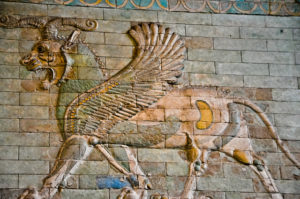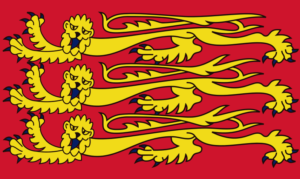We have seen that a sign is a distinguishing mark, often miraculous in nature, given as evidence that something is true. From Mat 24:24, is it necessarily the case that such signs guarantee that something is true? Cf. 2Th 2:9, Rev 19:20. As true signs and wonders are a manifestation of the power of the true God, whose work should we understand false signs and wonders are a manifestation of? See Rev 16:13-14, and consider that for everything God has that is true and holy, Satan has a counterfeit that is false and worldly, including a false and worldly god, a false and worldly messiah, a false and worldly spirit, a false and worldly church, and a false and worldly gospel promising a false and worldly salvation that is attested by false and worldly signs and wonders; cf. 2Co 11:4.
Who is the false god and ruler of this world who has blinded the minds of the unbelieving (2Co 4:4)? See Luk 4:5-7, Joh 12:31, Rev 12:9. See also Rev 13:1 and the context that follows for John’s description of the beast and the false prophet that together with the dragon compose an unholy trinity. Who does the beast out of the sea having ten horns and seven heads, and that was like a leopard with the feet of a bear and the mouth of a lion represent? See Dan 7:2-6 where a similar vision of beasts from the sea represented the kingdoms of the world and their rulers; cf. Isa 57:20. Hence this beast represents a chimera of the kingdoms of the world and their rulers, and especially the spiritual forces of wickedness in the heavenly places (Eph 6:12) who are behind them, to whom the dragon gives their power and throne and great authority (Rev 13:2); cf. Dan 10:13,20-21. In what way are all the kingdoms of the world and their rulers, however great they may be, a false savior and messiah to men? Although they promise them peace and safety, prosperity and security, does the history of the nations of the world demonstrate they are ever really able to provide these? Why not? See 1Jo 5:19 and consider that the god of this world is not God and in fact seeks to enslave men through sin—not free them to sin in order that they may fulfill the lustful desires of their flesh without consequence as he deceives them to believe. How does this contrast with the true salvation of the true Christ? See 1Jo 3:8, and observe that Jesus came to “save His people from their sins” (Mat 1:21); He “gave Himself for our sins, that He might deliver us out of this present evil age” (Gal 1:4), out of Satan’s dominion of darkness in the kingdoms of this world into His own kingdom of righteousness, peace and joy (Col 1:13, Rom 14:17).
What is the significance that one of the heads of the beast out of the sea had a fatal wound that was healed (Rev 13:3)? How is that like the true Christ? Is it possible that the kingdoms of this world that were dealt a fatal blow at Christ’s first coming might have a resurrection of sorts to offer those on the broad road to destruction the renewed hope of a worldly kingdom? What in particular might that beast represent today that “had the wound of the sword (of God’s word) and has come to life” (Rev 13:14)? Although prophecy is only completely clear in hindsight, we might wonder if this could refer to a modern resurgence of the Babylonian empire in the British and American empires which were directly responsible for establishing the United Nations in 1941 as a united worldwide government in opposition to God’s kingdom that man first sought to establish at Babel (cf. Gen 11:1-9, and notice that the Hebrew word translated twice as Babel is translated as Babylon 257 times). For in Daniel’s visions, Babylon was the “head of gold” (Dan 2:38) of the great kingdoms of the world; cf. Gen 10:9-10 for the other occurrence of Babel. It was this first beast out of the sea that was “like a lion and had the wings of an eagle” (Dan 7:4), which are also important symbols for England and the United States. The description of Babylon in Rev 17-18 as a great and rich city that has prostituted herself with the world also seems particularly fitting to this alliance of what were perhaps the two most Christian nations in history.


